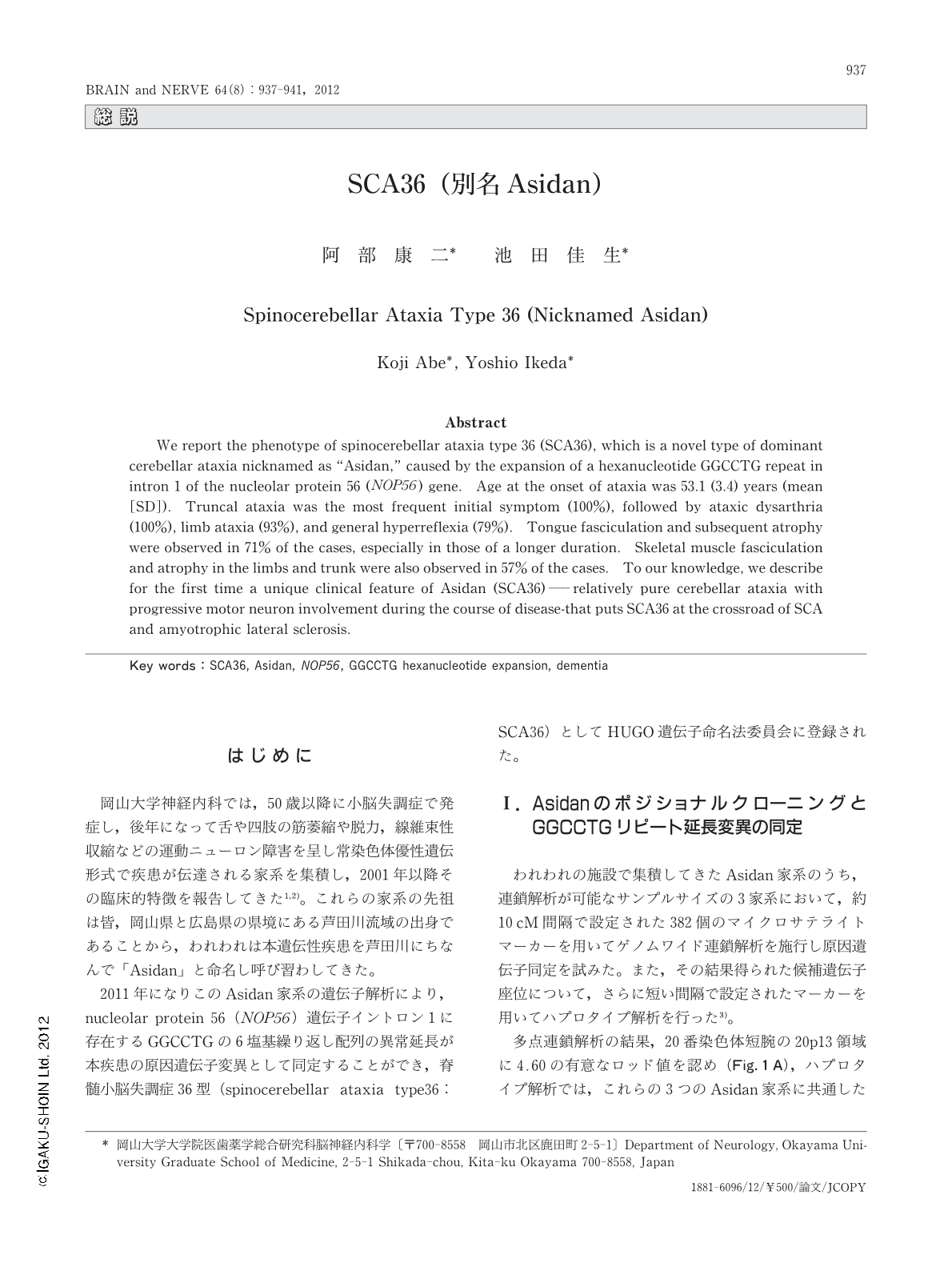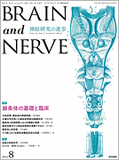Japanese
English
- 有料閲覧
- Abstract 文献概要
- 1ページ目 Look Inside
- 参考文献 Reference
はじめに
岡山大学神経内科では,50歳以降に小脳失調症で発症し,後年になって舌や四肢の筋萎縮や脱力,線維束性収縮などの運動ニューロン障害を呈し常染色体優性遺伝形式で疾患が伝達される家系を集積し,2001年以降その臨床的特徴を報告してきた1,2)。これらの家系の先祖は皆,岡山県と広島県の県境にある芦田川流域の出身であることから,われわれは本遺伝性疾患を芦田川にちなんで「Asidan」と命名し呼び習わしてきた。
2011年になりこのAsidan家系の遺伝子解析により,nucleolar protein 56(NOP56)遺伝子イントロン1に存在するGGCCTGの6塩基繰り返し配列の異常延長が本疾患の原因遺伝子変異として同定することができ,脊髄小脳失調症36型(spinocerebellar ataxia type36:SCA36)としてHUGO遺伝子命名法委員会に登録された。
Abstract
We report the phenotype of spinocerebellar ataxia type 36 (SCA36), which is a novel type of dominant cerebellar ataxia nicknamed as "Asidan," caused by the expansion of a hexanucleotide GGCCTG repeat in intron 1 of the nucleolar protein 56 (NOP56) gene. Age at the onset of ataxia was 53.1 (3.4) years (mean[SD]). Truncal ataxia was the most frequent initial symptom (100%), followed by ataxic dysarthria (100%), limb ataxia (93%), and general hyperreflexia (79%). Tongue fasciculation and subsequent atrophy were observed in 71% of the cases, especially in those of a longer duration. Skeletal muscle fasciculation and atrophy in the limbs and trunk were also observed in 57% of the cases. To our knowledge, we describe for the first time a unique clinical feature of Asidan (SCA36)――relatively pure cerebellar ataxia with progressive motor neuron involvement during the course of disease-that puts SCA36 at the crossroad of SCA and amyotrophic lateral sclerosis.

Copyright © 2012, Igaku-Shoin Ltd. All rights reserved.


